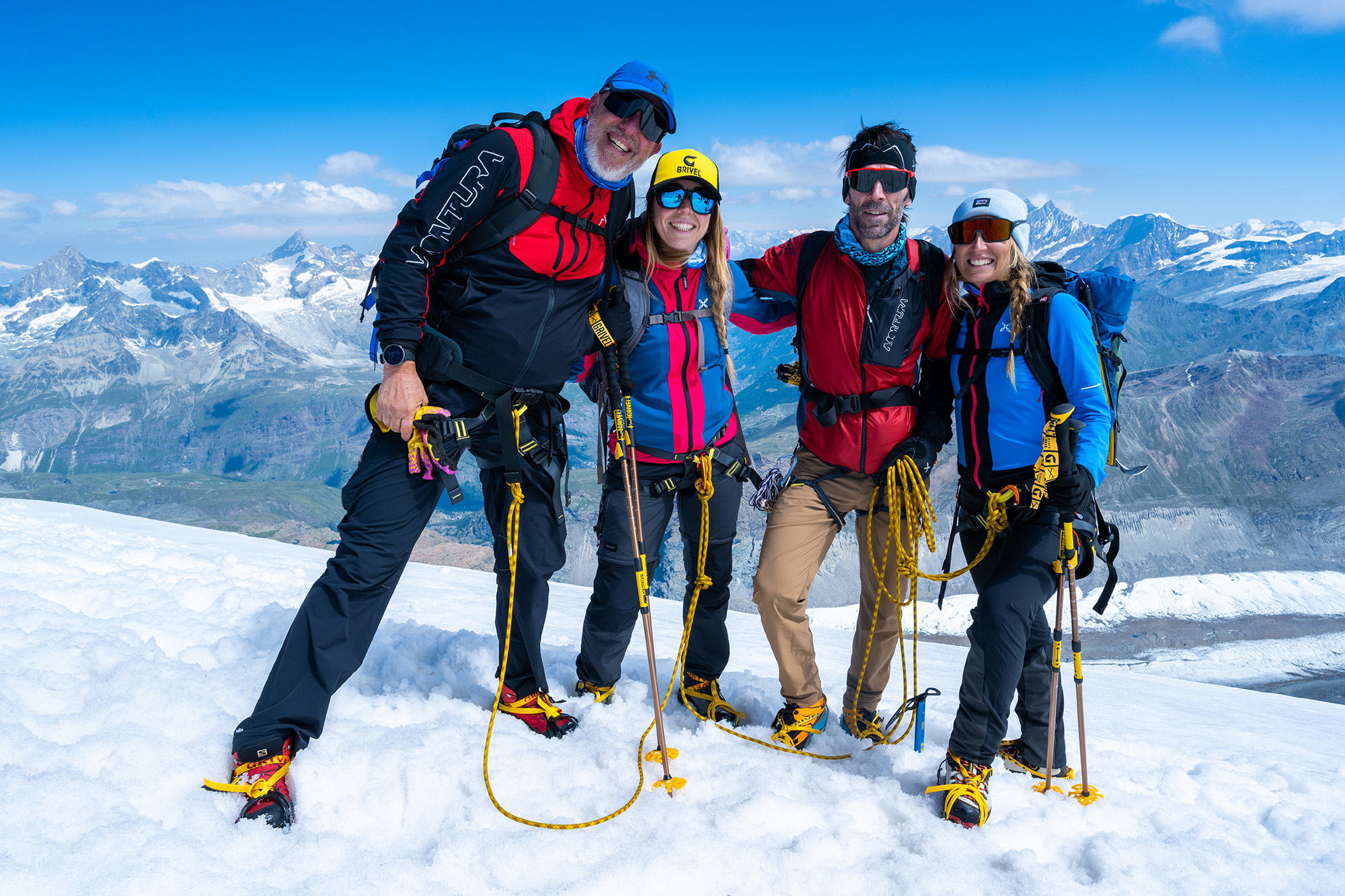By: Marta Manzoni
Photos by: Marco Spataro
By: Marta Manzoni
Photos by: Marco Spataro
We are in the Monte Rosa massif: from here we see the Western Breithorn, the Central Breithorn, and the Eastern Breithorn. Then, there at the bottom, you notice that the rock is cleanly cut: that is The Black Rock, a mountain located in the Pennine Alps, and it is another four-thousand-meter mountain. Then we have Pollux (4092 m), that lower little pyramid, while those two mountains to the left, are the Lyskamm, Western and Eastern, also four thousand meters high. The one you see larger on the right is Castor (4228 m). You can also see Capanna Margherita, the highest refuge in Europe: it’s that little triangle that looks like a stone, says our exceptional companion, Hervé Barmasse.
Rope-bound with him, we climbed to the summit of the Breithorn, and experienced two days immersed in incredible mountains .
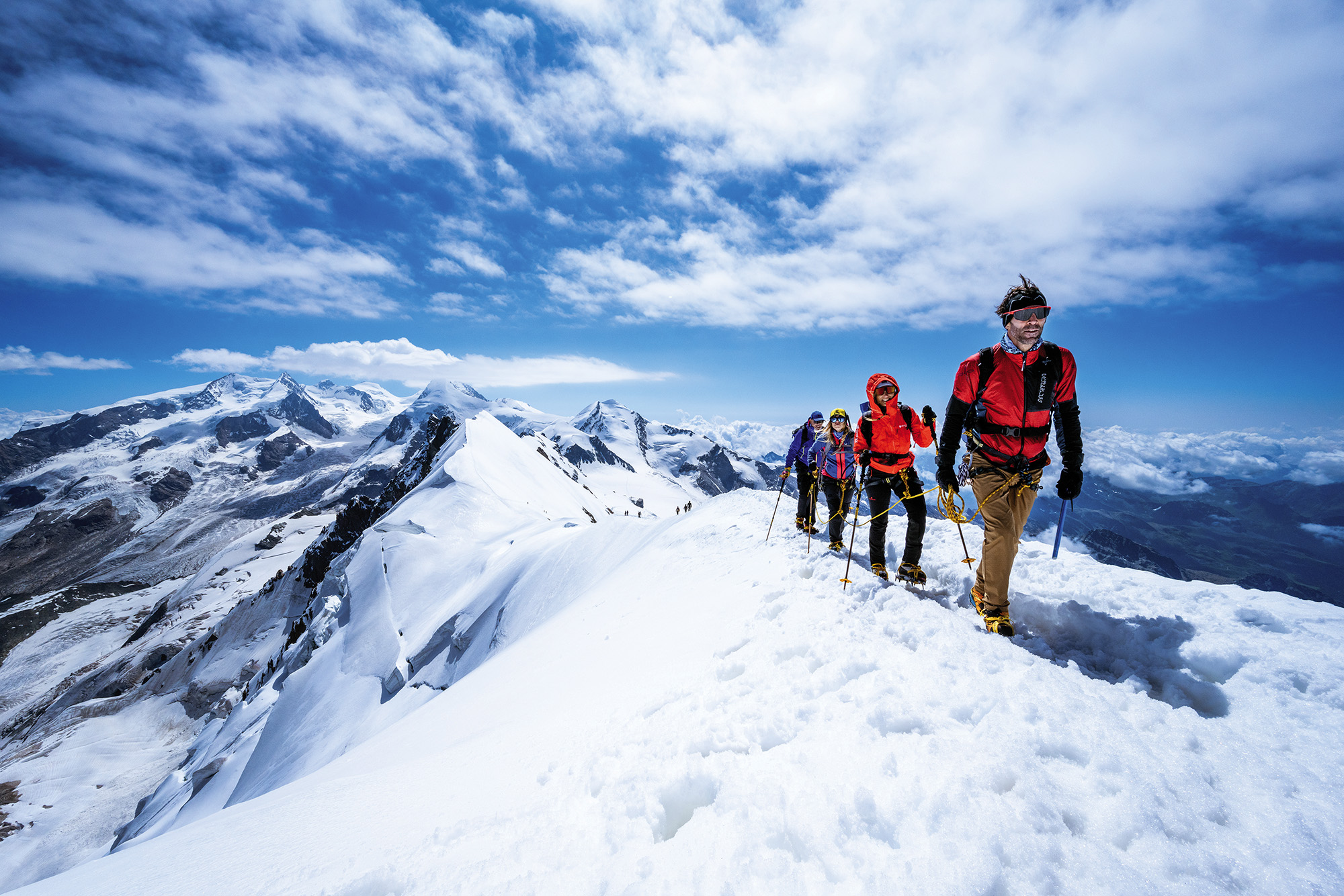
A professional mountaineer, writer and filmmaker, Hervé Barmasse is a Montura athlete, a brand born in Rovereto that has become a reference for technical mountain products, also known in the world of mountain guides and mountain rescue workers, as well as in biking and sailing. A Matterhorn mountain guide for four generations, Hervé Barmasse’s name is linked to important ascents, in Italy and around the world.
Unlike this year, where conditions are quite good, thanks to a spring during which it snowed at high altitude, last year you have to imagine that in the latter part of the Breithorn there were small streams of water, due to the hot weather. What you now see as white was all black. I had never seen the glacier like that in my whole life. It was indeed impressive, as scientists’ data also show. We guides always say that, living in the mountains on a daily basis, we are like a thermometer of climate emergency-since we observe changes that have never been there before, continues the mountaineer from Valle d’Aosta.
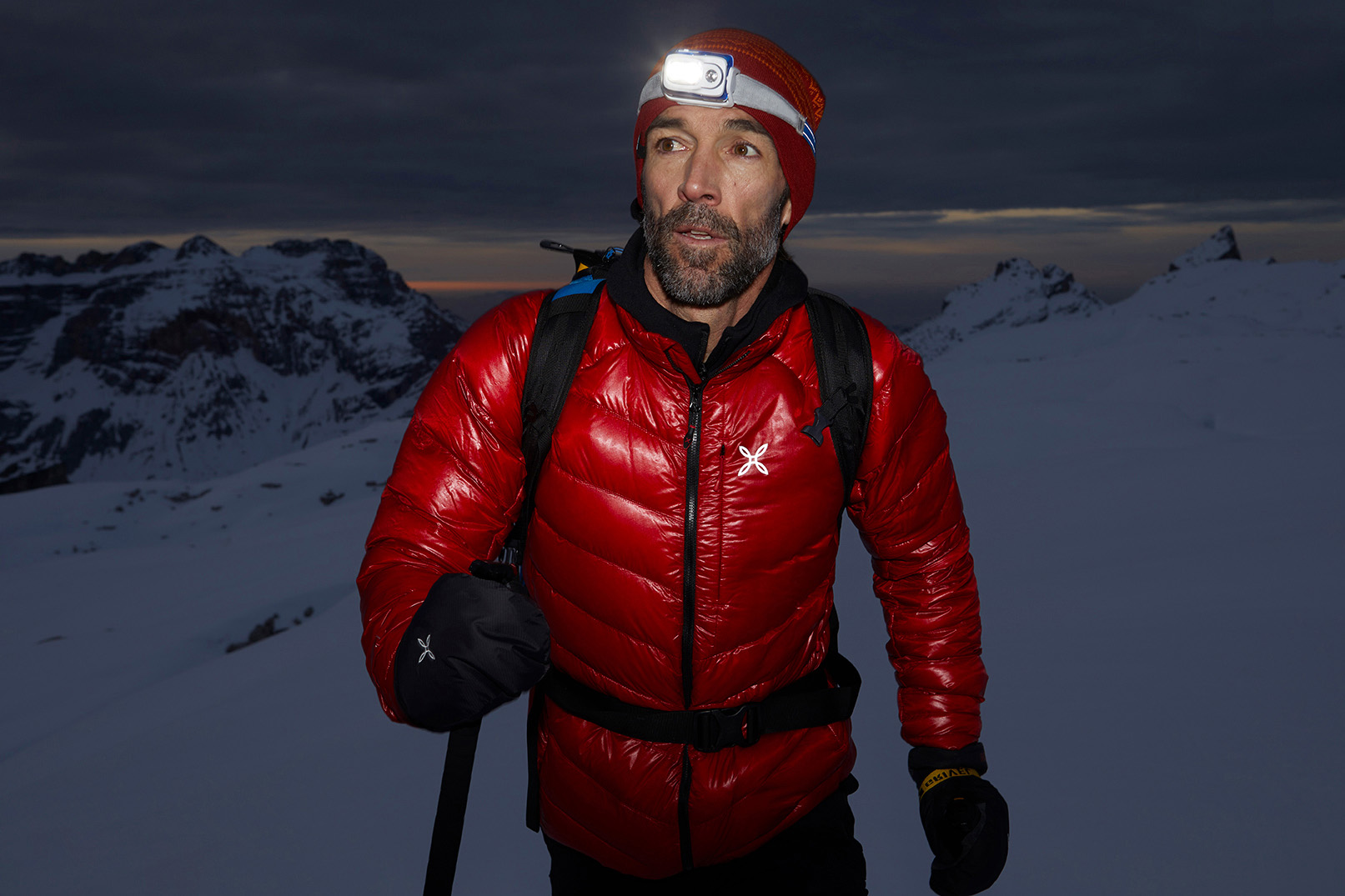
We tie up to start the climb. As we walk we have the opportunity to learn about the Matterhorn as told by those who know its every secret. Hervé remembers the route opened on the famous mountain roped with his father Marco, “Couloir Barmasse,” as it was called, not by him, but by others, in consideration of the composition of the roped party. The same street also featured of the film “Continuous Line,” the mountaineer’s first experience as a director. Barmasse’s love for this mountain he also recounted in the book “Matterhorn, the Legendary Mountain,” published by Rizzoli.
Last year we risked drought in the Po Valley. Thinking about the future means realizing that where in Breuil Cervinia, when I was a kid, there was a meter and a half of snow in November, now you have to shoot artificial snow. The idea is to diversify tourism, just as it was when it was born, since it existed even before the ski boom. Today, people also want more, sensitivity to the environment is increasing, and sustainable tourism needs to be developed – tells Barmasse as we take a break to put on crampons. We meet many tourists along the trail, fully dressed in the most fashionable outdoor brands, accompanied by guides. Near the facility Alpine Crossing, some foreigners were in sneakers. At times it almost feels more like being in an amusement park than in the mountains.
I remember 20 years ago, until almost the end of July, we were still training on the Italian side, with the snow of winter, and going down to Plan Maison, On skis. Last year, for the first time in history, they had to close the ski lifts, as it was no longer freezing, and you have to consider that this is the highest glacier in the Alps, let alone how the others were. In the old days, when the zero temperature was recorded above three thousand five hundred meters, we used to say it was hot, while today it is recorded in the Alps above five thousand meters. Until last week here they were skiing shirtless, dripping with sweat.
We listen to Hervé and continue on, with the Little Matterhorn accompanying us on the ascent.
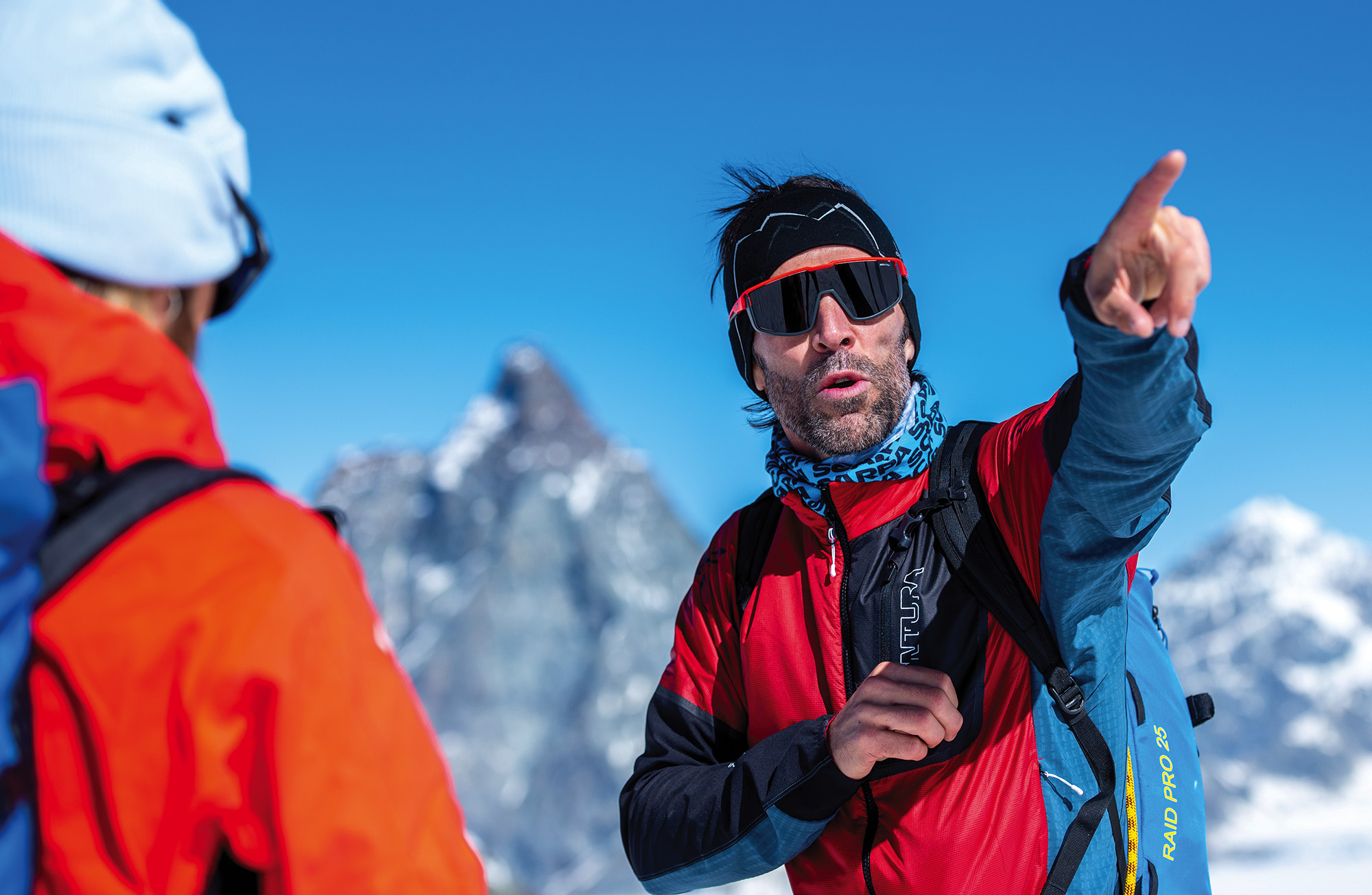
The slope becomes steeper and fatigue increases. It is a good feeling, that of not being able to control everything, to give up an idea of perfection, to stand outside the rules of the world imposed by society.
It would be nice if there were more protected areas and natural parks. When I go to areas in the Apennines, it seems to me that they take the Alps as a reference for tourism, whereas I think they could be an alternative model for the future, different from the Alps, with lots of infrastructure and affordable for those who want a certain kind of outdoors. Some people are noticing: in winter, the Apennines are full of foreigners ski mountaineering – Barmasse offers his point of view, which can be fully shared. A perspective that takes into account the alarm raised by the planet. Someone asks how much elevation gain we made: his device is not working. In our society, performance has become an obsession.
It is not necessarily the case that all this technology will be useful in times of need. I think relying solely on the phone, on apps, is not a good idea. It happened several times that when help needed to be called, the phone would not pick up. In fact, in the mountains, there are holes in satellite coverage in some places. Technology helps us accomplish things that we could not do before, but knowing how to use a compass can still be useful-there are skills that a person should always have in mind. We trust the weather forecast, but it is only a prediction, and in the mountains it can change abruptly – Hervé Barmasse explains as we reach the summit.
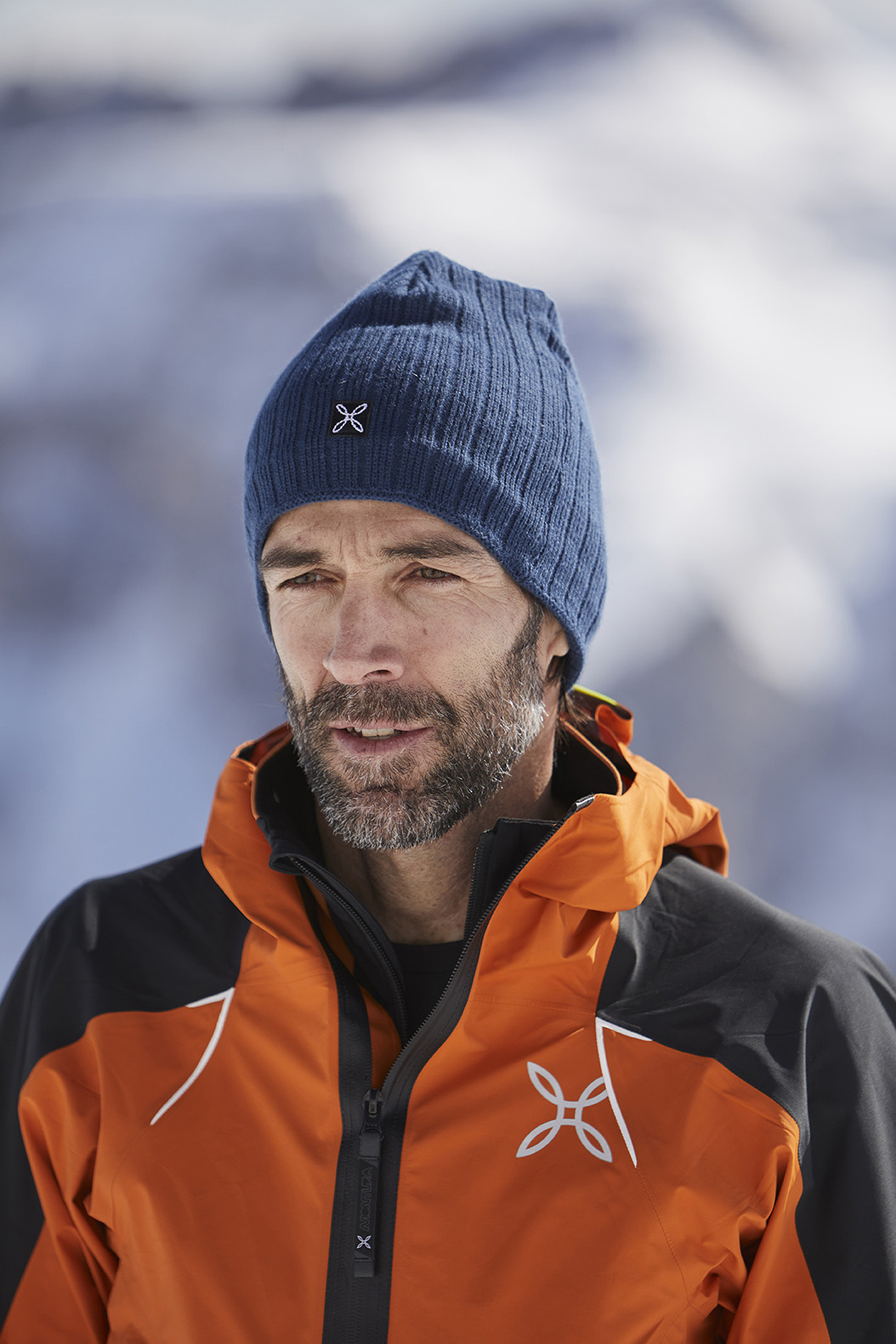
I fill my eyes with this skyline. The wind makes me feel alive. We begin the descent. Through his speeches, Hervé encourages people to think critically and make informed choices. Few mountaineers talk about the huge amount of garbage on all the eight-thousanders, where the normal routes start, where mass mountaineering occurs – says the mountaineer from Valle d’Aosta. Indeed, on the Internet, one can find puzzling images of K2, which well represent the extent of the problem of waste accumulation. The walk that-after lunch-leads us to the Duca degli Abruzzi hut at Oriondé is a new time for reflection.
I am privileged: I can try to achieve my dreams, which not everyone is allowed to do. Luck is something of a taboo in the mountaineering world: it is a component of this activity, but no one talks about it. In Pakistan, in Shimshall, I almost died when part of the mountain I was on collapsed on me – Barmasse recalls. At the refuge, which is located on a plateau known as Riondé, we find a warm welcome. After dinner, Hervé shows us some footage of his experiences: adventures that gave him the opportunity to grow, not as a mountaineer, but from the point of view of some known issues to which we do not attach significance, but which are actually important in life.
A sixteen years old, my idea was to become a skiing champion-I wanted to win the Olympics and be the new Alberto Tomba. Life, however, can be severe, and so, at a hundred and twenty an hour, I crashed into an iron pole, which got the better of me. The consequence was a head injury, and many operations, especially on the knees. I no longer had the opportunity to ski, and at that moment I was at a crossroads: I had to decide what to do with my life, which sometimes slams the door in your face, but also presents you with new opportunities. My father, who had previously not wanted me to become a mountaineer, looked me in the eye and told me to recover from the accident, because he wanted to take me to climb the most beautiful mountain in the world. The Matterhorn represents the idea of the perfect mountain-it is the only one that is used to describe other mountains in the world. For example, Fitz Roy is said to be the Matterhorn of Patagonia.. Hervé captures our attention with his stories, while outside the stars light up the night.
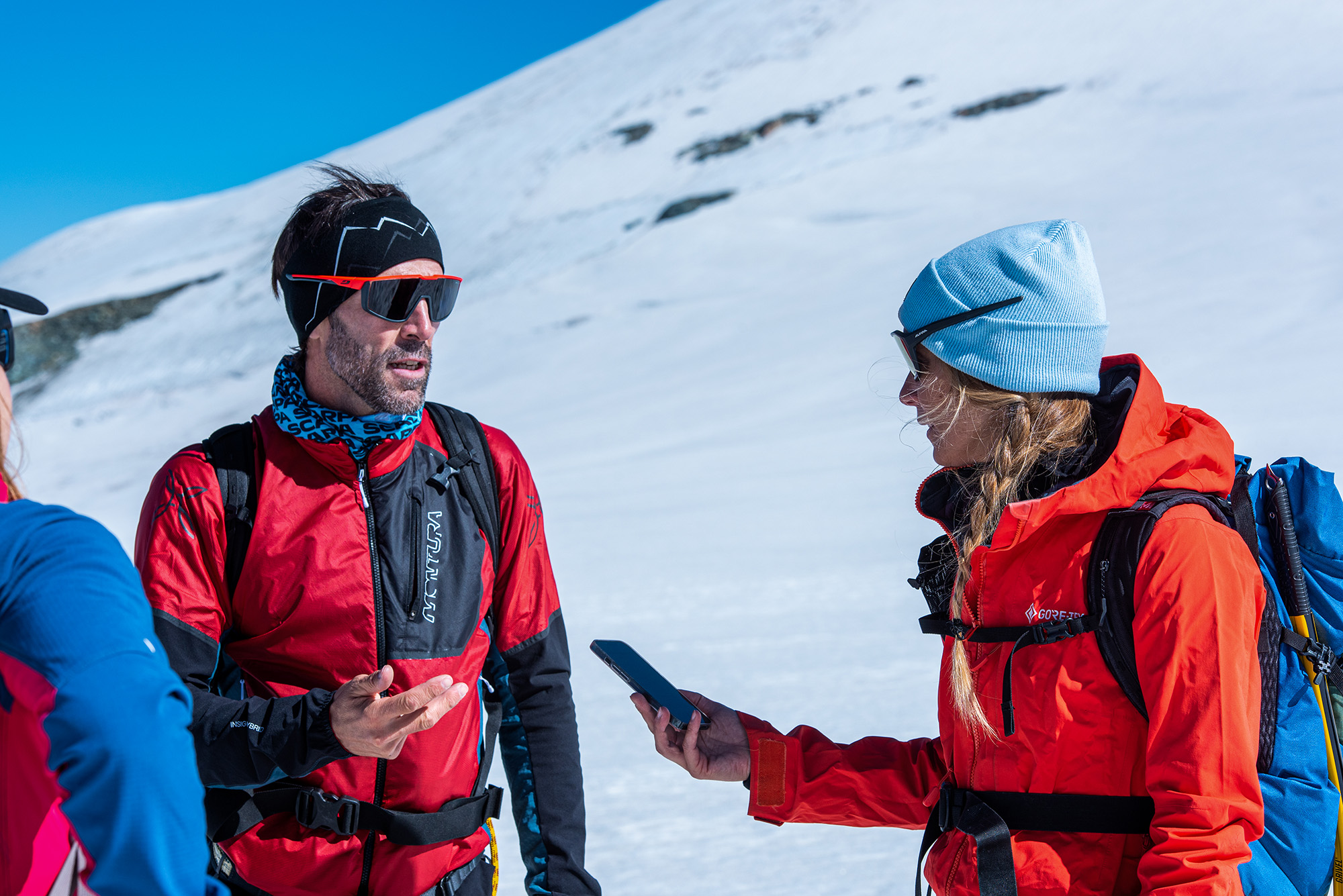
Going to the Matterhorn, it changed my life. I became a mountain guide first, and after that, mountaineering became my life, allowing me to travel the world, confront different cultures, and thus grow as a person.
The next morning, at dawn, we meet outside the shelter Nani Gomez, and with her we join in silent yoga practice. We meditate, remain in the stillness, notice what is already there, welcome the pure beauty of the mountains, and make room in our hearts for the emotions of these days.
A sixteen years old, my idea was to become a skiing champion-I wanted to win the Olympics and be the new Alberto Tomba. Life, however, can be severe, and so, at a hundred and twenty an hour, I crashed into an iron pole, which got the better of me. The consequence was a head injury, and many operations, especially on the knees. I no longer had the opportunity to ski, and at that moment I was at a crossroads: I had to decide what to do with my life, which sometimes slams the door in your face, but also presents you with new opportunities. My father, who had previously not wanted me to become a mountaineer, looked me in the eye and told me to recover from the accident, because he wanted to take me to climb the most beautiful mountain in the world. The Matterhorn represents the idea of the perfect mountain-it is the only one that is used to describe other mountains in the world. For example, Fitz Roy is said to be the Matterhorn of Patagonia.. Hervé captures our attention with his stories, while outside the stars light up the night.
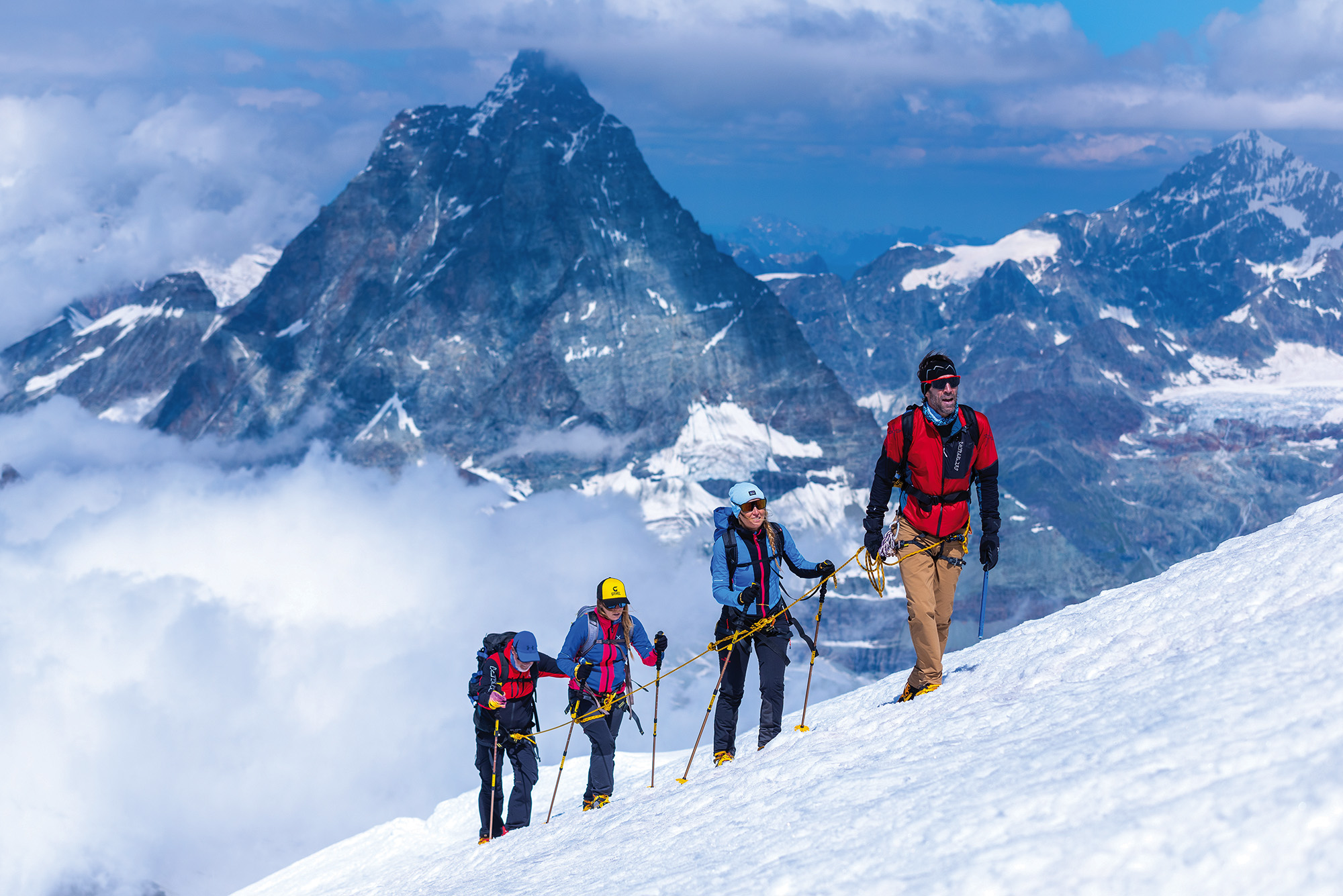
Going to the Matterhorn, it changed my life. I became a mountain guide first, and after that, mountaineering became my life, allowing me to travel the world, confront different cultures, and thus grow as a person.
The next morning, at dawn, we meet outside the shelter Nani Gomez, and with her we join in silent yoga practice. We meditate, remain in the stillness, notice what is already there, welcome the pure beauty of the mountains, and make room in our hearts for the emotions of these days.
